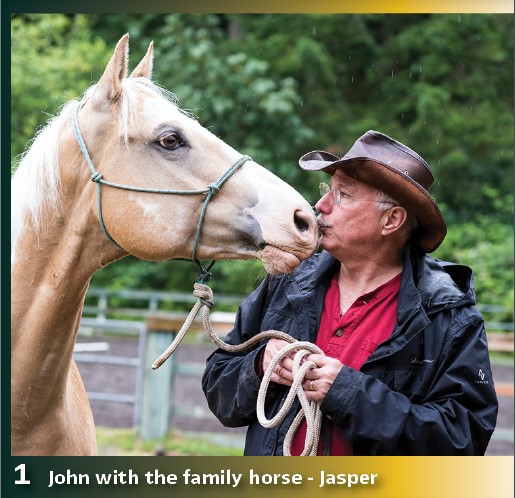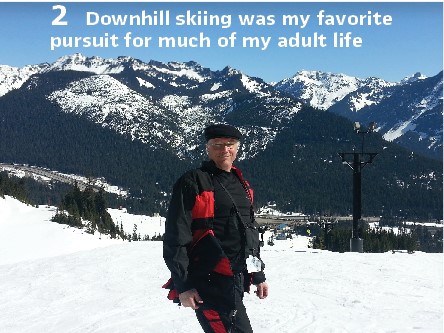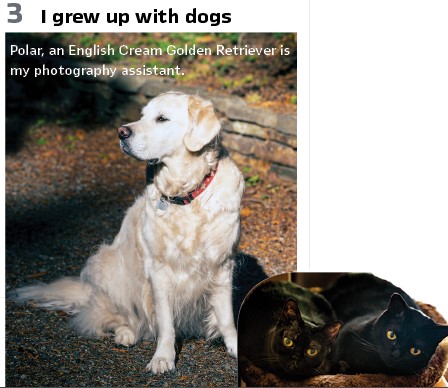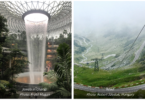by John (JD) Hammerly, The Glarus Group, USA

One’s life is built on much more than a vocation. A life includes personal values, family, and passions outside of work. I have been fortunate to have broad interests that developed into activities and then into pursuits.
More than hobbies, these pursuits shape who I am and foster relationships with those
I care for most.
Still, as with many of us in the electric utility industry, my commitment and caring about doing what I do to help keep the lights on has greatly influenced and impacted my entire life.
Yesterday, I was a bright-eyed, 22-year-old graduate of the University of Wisconsin, starting my first job with Harris Corporation. Today, I am facing seven decades of life and nearly five in the electric utility industry. My journey has not always been easy or pretty, but the time has flown. Whatever the travails and disappointments, there were always great people to work with and fascinating problems that required solutions. I realize now how fortunate I have been to experience this journey.
How did I get here? Entering college, I realized programming paid $6.50 an hour while scrubbing plates paid $1.75. I had never seen a computer, but undeterred by my lack of knowledge or experience, I pursued a programming job. The first step was to key-punch poetry onto Hollerith cards as a first step toward becoming a programmer. As a result, I landed a $3.00 an hour job entering experimental psychology data.
My key-punch operator career ended abruptly when my boss, a psychology professor, fired his programmer. Assuming I was computer savvy, he offered me the job, only asking how long it would take to learn assembly language for the computer driving his experiments. A week later, I deployed my first program controlling a psychology experiment. Not because of talent, just persistence, and good fortune.
Working for the University as programmers, three upperclassmen and I spent countless hours extracting information from US Census Data tapes, yes tapes. The business school, medical departments, sociologists, and psychologists relied on Census data. The four of us used card decks, and batch runs to reduce US Census Data into digestible subsets based on specific attributes of the data.
We decided to start a software company whose product enabled data extraction interactively, without card decks, by simply entering parameters on a teletype. Overnight, it seemed we sold more than twenty licenses. The company was more fun than college, and after my three partners graduated, taking real jobs, I was left in charge.
My graduation came at a time of few job opportunities. Fortunately, our little company provided for my survival, augmented by part-time programming projects. Eventually, IBM came knocking and bought the company. They closed it and rebranded the technology. It was not a windfall, but it allowed for a new, used car and an upgraded apartment. It was only much later in my life that I realized how fortunate the experience of creating, running, and selling a company, however small, was to prepare me for my future opportunities.
Armed with a degree in computer science and psychology and benefiting from the introductions and recommendations of professors and upperclassmen already in the computer industry, Harris Corporation hired me as a field technician supporting Harris minicomputers. Harris computers were used in aerospace and defense, electric utility energy management systems, and education. The education market space was wholly opportunistic, but Harris Corporation pursued the first two verticals with focused marketing and knowledgeable teams. Although the bleeding-edge problems and unlimited resources made aerospace and defense attractive for a technologist, the early years of energy management systems and SCADA brought their own challenges with telemetry, 24×7 operations, analytics, and simulation of real-world systems.
I soon found I was heavily invested in making the tools that keep the lights on, hopefully making them better. At the same time, I discovered there was always someone better at what I did than I was, requiring me to keep expanding my scope, honing my skills, and challenging myself.
With my career launched, I could pursue outside activities that interested me and many things interested me, and still do. Over my nearly 70 years, some of these activities endure, while others appeared because of circumstance or friends only to fade over time.
Cooking: Before my high school basketball coach introduced the idea of going to college, the first in my family, I dreamed of being a chef. Growing up on a dairy farm provided access to many fresh ingredients. My family had a rich legacy of Swiss culture and recipes. As a child, I enjoyed being in the kitchen with my grandmothers, watching, learning, and eating. Even though I found another career path, my love of cooking and fine food persists to the present.
Even for one, cooking is pleasurable because with increasing career success came a focus on removing obstacles, solving problems, and measuring outcomes, “never seeing the cake, baked.” As I matriculated further up the corporate ladder, the opportunity to take something from conception to delivery with my own hands became rarer. Cooking has always provided that fulfillment.
Even after many years, I still love to cook and, for that reason, have taken master’s classes from Italian, French, German, Mexican, and Chinese chefs to explore new tastes, techniques, and recipes. My love of cooking led to my love of wine and, although more of a drinker than a collector, I keep a modest cellar of what I like. But I am always open to trying a new varietal or style and excited to explore the world through wines from different regions learning about the culture and cuisine.

Along with cooking, downhill skiing was my favorite pursuit for much of my adult life. Being athletic made learning to ski easy in my early 20s. Being fearless made getting up from frequent falls possible, and my natural aggressiveness drove me to become better, constantly testing my limits. I later taught my daughters to ski before they were four.
Both became accomplished skiers, eventually choosing to teach little kids to ski while I was teaching first-time adult skiers and racing for teenagers.
All my life, I would throw the boards on the roof and go, regardless of the conditions or the terrain. For those 70 and over, most ski areas offer half-price lift-tickets, something I intend to explore next season. At this age, I will need to commit to more physical preparation and pursue a little less aggressive style, but high-speed cruising on a sunny day brings joy to my heart and puts a smile on my face. I have been fortunate thus far only to have had a few minor injuries and no broken bones.
It seems I was destined to take up photography. My father took pictures of the cows on our dairy farm, but he didn’t consider himself a photographer. For him, photography was a tool to capture something that interested him and support his livelihood. The film-based technology of the day was cumbersome, but it was a pastime he enjoyed. One of my college roommates was a photographer and turned our bathroom into his darkroom. His passion led to his life-long vocation, ultimately becoming one of the leading news and feature photographers in the US. The experiences with my father and roommate piqued my interest, eventually putting a DSLR in my hands. Truth be told, my unwavering and enduring interest in technology sustains my interest in photography. Not only the cameras, lenses, and filters, but the software and post-processing used to fix mistakes or create magical images continues to hold my interest today.
HDR: Maybe wrong, but never in doubt, I dabble with technology-focused techniques like high dynamic range (HDR). HDR merges multiple images taken with different settings into a single interesting and unique image. My photographs surprise me. Macro photography of a bee on a flower, my subject, shows a tiny spider on the flower’s stem on closer examination. Despite today’s autofocus wizardry, occasionally, the “M” setting plays a role in getting the result. Regardless, the photography process challenges my skills, both technically and creatively, even when the outcomes fail to meet my expectations.

Today, I take the time to plan my photography more, seeing pictures in the world rather than taking pictures of the world. I try to make pictures and see subjects as pictures. I take off, drive somewhere, and take pictures: the result, some days chicken, some days feathers. If the light is good, I will take the camera when I walk Polar, someone I will talk more about later. At the ready, I keep my camera within reach should an opportunity for a picture appear, whether when traveling for work or in my home office. Being prepared allowed me to photograph a mother bobcat teaching her kitten to hunt and a herd of elk crossing the river behind our house. Yes, I am fortunate because we live in a rural setting where nature abounds.
Photography is very specialized. Being a photographer could mean shooting travel, landscapes, wildlife, events, weddings, portraiture, fine art, macro, astrophotography, as just the major specialties. I focus on travel, landscapes, and animals. Yes, like my father, I take pictures of cows.
With a career that allowed and cursed me with six million air-miles, travel photographs documented my destinations. Even today, I still find traveling exciting and alluring. Traveling seems a gift regardless of where it takes you when you’re raised on a farm outside a town with a population of 810. Taking a camera on a trip offers the opportunity to capture and bring home recollections of where you went, what you saw, and, if done well, how you felt when there.
For me, landscapes should evoke emotion. Sometimes the grandeur and majesty remind us of our place in the world. In other settings or places, the solitude, isolation, peace, or energy causes feelings, something a well-conceived landscape can capture. Landscape photography can be uncomplicated. Stop the car, walk to the edge of an overlook or location with a clear focal point, and shoot. Tweak some settings, move for a different perspective, or change the light and shoot some more. But sometimes the more complex is more interesting. Sitting in an itchy wheat field with nothing in view but ripe heads of the grain remain one of my favorite landscape photographs.
Over time and with better tools and more skill, I discovered the lure of solitude and emptiness in landscapes. A harvested field, the crops gone, on a cloudy day has its own tranquility. My landscapes often contain clouds because I have always been intrigued by weather and have a NOAA weather station at my home. Clouds can be a peaceful or ominous addition to a landscape, many times more interesting than a beautiful blue sky. My Swiss heritage creeps into my landscape photographs, manifested by my fascination with mountains and glaciers.

Animals in the landscape are a particular favorite because it incorporates two of my photography affinities. Growing up on the farm fostered my love of both domestic and wild animals. I live in the Upper Snoqualmie Valley, in the foothills on the Cascade Range’s Western slope. Think temperate rain forest averaging about six feet of rain annually. Everything is green, much of the year soggy, but always a variety of green, from verdant to pale. The colors make an enduring backdrop to wildlife photography, and wildlife is abundant with deer, Jefferson Squirrels, eagles, owls, and osprey a common sight. Black bears, coyotes, and mountain lions make occasional appearances, although undoubtedly when the light is bad, or I am without my camera.
The Upper Valley also has elk, with the herd numbering nearly 600. No hunting is allowed, so the local elk come and go wherever they wish, eating your garden, landscaping, or hanging out at the local high-school football field. Unlike deer, and partially because of their size, elk are much less shy of humans. Elk can pay little notice to your presence or focus intently on you, pose, go back to grazing, or simply lie down to rest, deciding you are non-threatening. The local elk are frequently my photographic subjects because they are easy to find after a walk or short drive almost any morning or evening, the best times to shoot pictures. Elk mating season requires more caution because the bulls become unpredictable. Although making magnificent subjects, common sense requires keeping some distance because elk are faster than you, even if you aren’t carrying a camera and a tripod.
Although I take pictures of almost any wildlife, insects, amphibians, birds, and mammals, some did not always qualify as my subjects. I have feared snakes throughout my life, but after listening to my wife’s perspective of their beauty, I overcame my fear. That said, while photographing snakes, I prefer using a longer lens, allowing more distance.

Lastly, a pursuit throughout my life has been pets. Pets, well, not pets, but family members who are not human, have always been an important and significant part of my life. I have been fortunate to share my home with cats since my 20s and, for the last two decades, dogs as well.
A wonderful rescue cat joined my life after being stranded on a warm car hood during a snowstorm. He was part Bombay. His demeanor and nature defined what I enjoy about cats. Today, our family includes two cats, Coal Train and Cocoa, both Bombays. Bombays are people cats that want to engage with humans and clearly enjoy human interactions. They are also ridiculously photogenic with jet black fir and deeply yellow eyes. Coal Train sleeps in my arms almost every night, while his half-sister sleeps at the foot of the bed.
I grew up with dogs, both Border Collies and Austrian Cattle dogs. Busy, engaged, and in need of a job, not well suited for life sharing your home. Since my youth, my first dog was a large, mahogany Golden Retriever, Ginger. Through Ginger, I discovered why I will always have a Golden Retriever. Outgoing, lovable, full of joy, and amazingly gentle, Goldens are easy to love. Ginger brought so much happiness to our family, and because some family members don’t have as long a life as we wish, Polar, an English Cream Golden Retriever succeeded her as our family dog. He is my photography assistant, waiting patiently in the car while shooting wildlife or by my side when shooting landscapes. Recently, Wyatt, a Shichon, half Bichon Frise, and half Shih Tzu, joined our family. At 90 pounds, Polar and Wyatt at 10 pounds provide both excitement and entertainment to the rest of the family. Although the cats will sometimes sleep on Polar, they have yet to accept four-month-old Wyatt fully. At times, all four will be on the king-sized bed, asleep.

The two other members of our family are horses. Thanks to my wife, who rescued a horse in need of her help, she introduced the first equine to our family. Since that experience, I have fallen in love with horses. Our family has our horse, Jasper, and my wife has her horse, Radar. Both are registered Paints. Although physically similar, muscular, quick, and powerful, their coats are quite different. Jasper is a palomino and Radar a solid chocolate color with three white feet and a white splash on his forehead. Even in rainy, muddy weather, there is something about grooming a horse. The process requires your full attention because of their size and proximity, but you can feel the bond and trust you have built with them. All our family members become subjects of my photography and occasionally get to sample my culinary creations.
Over many years and several jobs ago, I started in the electric utility industry. It has asked much and repaid more. Yes, our industry moves slowly because of our obligation to provide inexpensive and reliable electricity, enabling our ever-more demanding digital society. If one steps back from the seemingly glacial progress, all our industry accomplishments are amazing given the infrastructure’s scale, scope, and complexity. Having seen much change before today, I am keenly aware of the industry’s biggest changes and challenges in a century loom right before us. I feel fortunate to be able to contribute to helping shape that future.
Biography:

John (JD) Hammerly – 40+ years’ experience in managing business strategy and technology development and deployment in the electric utility industry for two major corporations and as the founder of two successful start-up technology companies. Today, he is CEO of The Glarus Group, a strategy firm advising utilities, RTO/ISOs, suppliers, and investors. JD has been an electricity industry innovator and leader following his computer science, psychology, and business degrees. His focus has been to improve the electricity industry’s design, economics, operations, and societal perception. His expertise spans generation, transmission, distribution, and end-use energy consumption. He was instrumental in founding the GridWise Alliance, Northwest Center for Electric Power Transmission, and regularly represents the industry at various Federal, State, and Local political and regulatory forums, including testifying before Congress on three occasions addressing electricity supply, delivery, and security.








